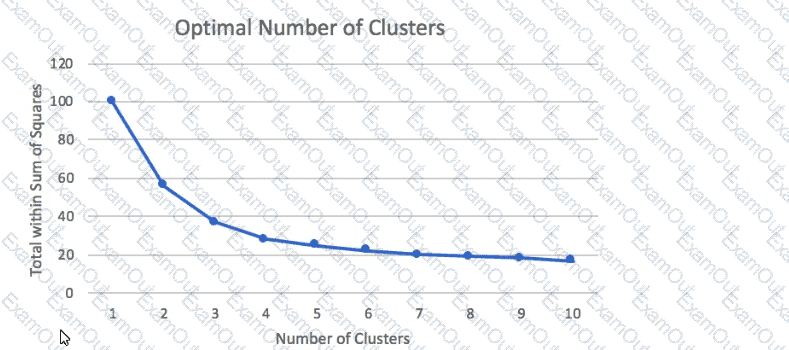A data scientist receives a new dataset in .csv format and stores the dataset in Amazon S3. The data scientist will use this dataset to train a machine learning (ML) model.
The data scientist first needs to identify any potential data quality issues in the dataset. The data scientist must identify values that are missing or values that are not valid. The data scientist must also identify the number of outliers in the dataset.
Which solution will meet these requirements with the LEAST operational effort?)
An e commerce company wants to launch a new cloud-based product recommendation feature for its web application. Due to data localization regulations, any sensitive data must not leave its on-premises data center, and the product recommendation model must be trained and tested using nonsensitive data only. Data transfer to the cloud must use IPsec. The web application is hosted on premises with a PostgreSQL database that contains all the data. The company wants the data to be uploaded securely to Amazon S3 each day for model retraining.
How should a machine learning specialist meet these requirements?
A company sells thousands of products on a public website and wants to automatically identify products with potential durability problems. The company has 1.000 reviews with date, star rating, review text, review summary, and customer email fields, but many reviews are incomplete and have empty fields. Each review has already been labeled with the correct durability result.
A machine learning specialist must train a model to identify reviews expressing concerns over product durability. The first model needs to be trained and ready to review in 2 days.
What is the MOST direct approach to solve this problem within 2 days?
A company needs to develop a model that uses a machine learning (ML) model for risk analysis. An ML engineer needs to evaluate the contribution each feature of a training dataset makes to the prediction of the target variable before the ML engineer selects features.
How should the ML engineer predict the contribution of each feature?
A Machine Learning Specialist prepared the following graph displaying the results of k-means for k = [1:10]

Considering the graph, what is a reasonable selection for the optimal choice of k?
A company supplies wholesale clothing to thousands of retail stores. A data scientist must create a model that predicts the daily sales volume for each item for each store. The data scientist discovers that more than half of the stores have been in business for less than 6 months. Sales data is highly consistent from week to week. Daily data from the database has been aggregated weekly, and weeks with no sales are omitted from the current dataset. Five years (100 MB) of sales data is available in Amazon S3.
Which factors will adversely impact the performance of the forecast model to be developed, and which actions should the data scientist take to mitigate them? (Choose two.)
An e-commerce company needs a customized training model to classify images of its shirts and pants products The company needs a proof of concept in 2 to 3 days with good accuracy Which compute choice should the Machine Learning Specialist select to train and achieve good accuracy on the model quickly?
A company has video feeds and images of a subway train station. The company wants to create a deep learning model that will alert the station manager if any passenger crosses the yellow safety line when there is no train in the station. The alert will be based on the video feeds. The company wants the model to detect the yellow line, the passengers who cross the yellow line, and the trains in the video feeds. This task requires labeling. The video data must remain confidential.
A data scientist creates a bounding box to label the sample data and uses an object detection model. However, the object detection model cannot clearly demarcate the yellow line, the passengers who cross the yellow line, and the trains.
Which labeling approach will help the company improve this model?
A company uses camera images of the tops of items displayed on store shelves to determine which items
were removed and which ones still remain. After several hours of data labeling, the company has a total of
1,000 hand-labeled images covering 10 distinct items. The training results were poor.
Which machine learning approach fulfills the company’s long-term needs?
Example Corp has an annual sale event from October to December. The company has sequential sales data from the past 15 years and wants to use Amazon ML to predict the sales for this year's upcoming event. Which method should Example Corp use to split the data into a training dataset and evaluation dataset?

